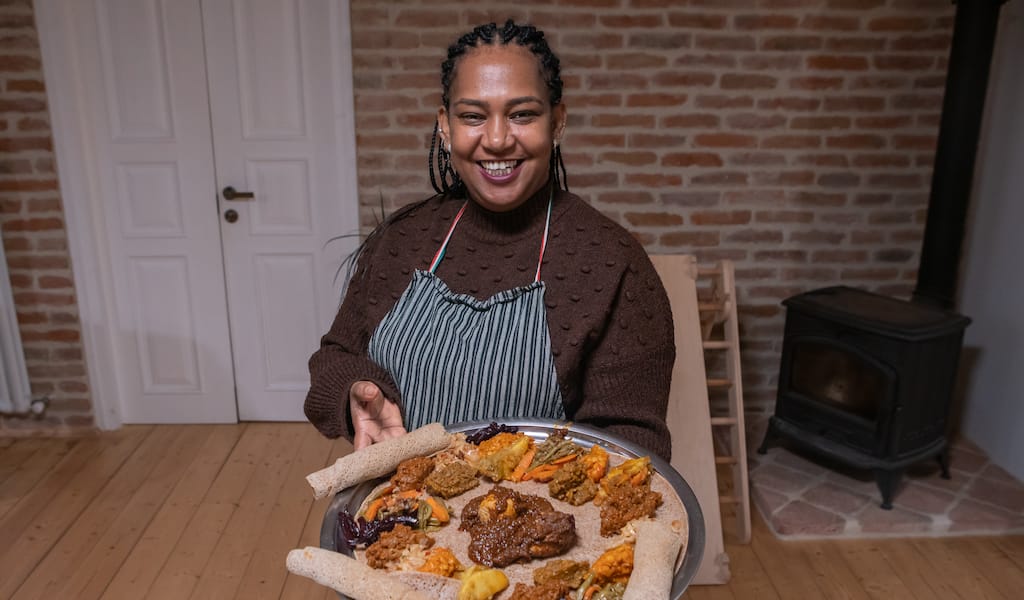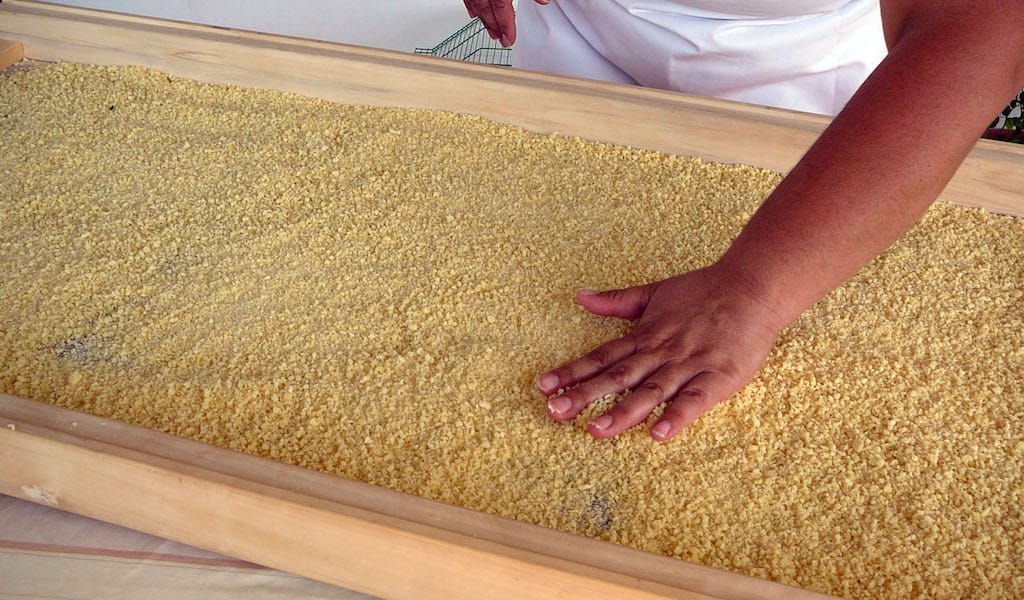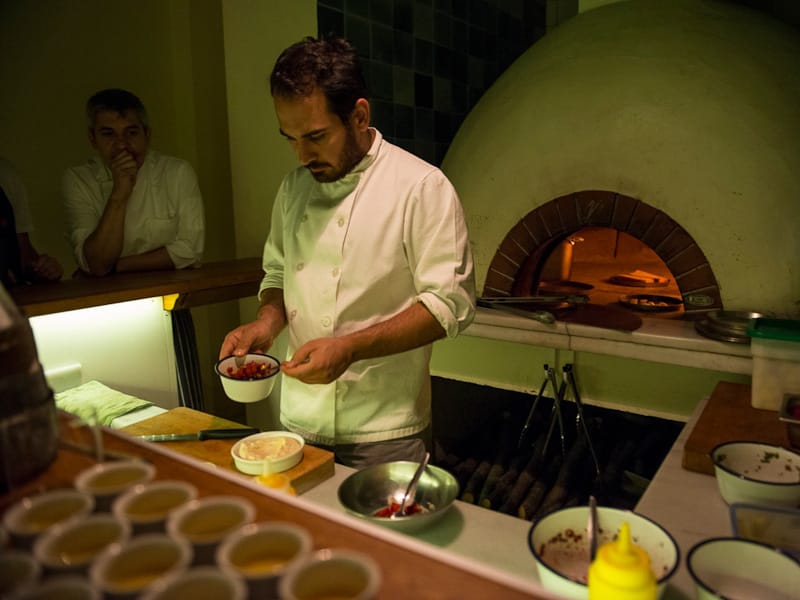When Ethiopian national Mimi Alemu Desta was proposed Georgia as a temporary place of refuge to help her escape her war-torn country in 2021, she assumed it was the state in the U.S.
Little did she imagine she would end up in the South Caucasus republic she didn’t even know existed till then, let alone that she’d be the first person to introduce the spice-and flavor-infused cuisine of her home country to residents of Tbilisi.
“It’s a miracle we escaped, a miracle we are living in Georgia today and a miracle that we have Ethiopian food in Georgia,” says Mimi, on how she chose the name for her catering and home delivery venture.
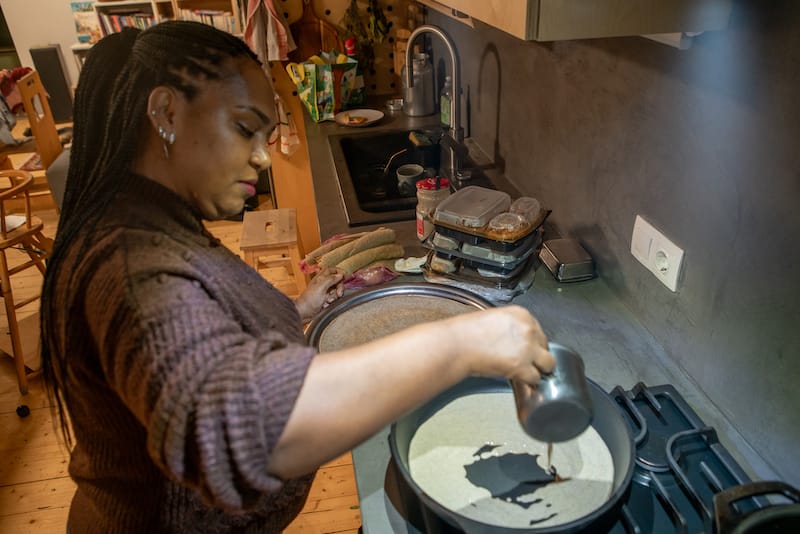
Mimi and her children arrived in Tbilisi in December 2021, entering the country on tourist visas procured by a travel agent who helps Ethiopians leave their country through legal means. Her three sons were 20, 17 and 3 years old at the time of their escape from months of heavy fighting between separatist group the Tigray People’s Liberation Front (TPLF) and Eritrean and Ethiopian forces. A Tigray native from Sheraro, a northwestern border town that served as a stronghold for TPLF fighters, Mimi was married to an Eritrean refugee who disappeared during the early months of conflict when ethnic killings and massacres took place on both sides. Her eldest son was also kidnapped by local militia and almost recruited to fight, but later released.
Taking no chances, Mimi says that was when she finally decided to escape to the capital, Addis Ababa. But life in the capital was not easy, as ethnic tensions and discrimination were at an all-time high and most Tigrayans viewed with suspicion. So, Mimi decided to leave Ethiopia and ended up in “the other Georgia.”
Tbilisi was supposed to be a pit stop until her agent helped her secure tourist visas to Europe or the U.K. But soon after they arrived, he cut all contact, recounts Mimi. She would have been completely lost if not for new friends she had made at an English-speaking protestant church in Tbilisi.
One of them, American Dana Cunliffe, advised Mimi to take legal steps to apply for refugee status in Georgia. After a few months of paperwork, she was formally accepted as an asylum seeker. This allowed her to enroll her younger sons at a local school and more importantly, to work legally. With jobs scarce even for locals, housekeeping was the only employment Mimi could find. But this didn’t stop Mimi from cooking up lavish Ethiopian meals for her new friends on the weekends. Upon her arrival in Tbilisi, Mimi had been delighted to discover the warren of Indian grocery shops in Deserter’s Bazaar, the city’s biggest market, to source the spices she needed to cook meals just like at home.
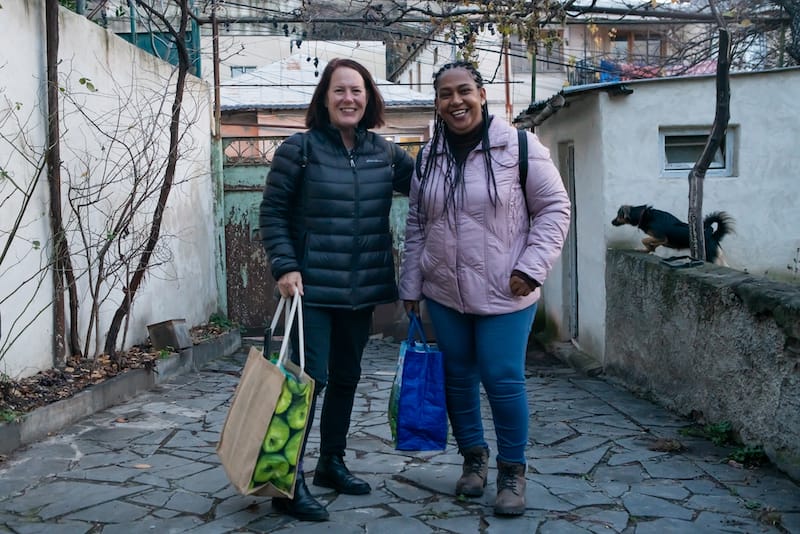
It was during one of these meals that Dana, now one of Mimi’s closest friends, encouraged her to consider turning her cooking skills into a business to help bring in additional income. Without the capital to open a restaurant, the two decided on a catering and home delivery service.
As the first African dining venture in town, Miracle Ethiopian Food quickly picked up speed with those in the know keen to try out the new exotic flavor on offer. Mimi’s clientele grew after catering for a few large groups, but her customers remain mostly expats able to handle the high spice quotient, as Georgians typically shy away from heat and chili in their food.
Ethiopian food is centered around a round spongy, crepelike flatbread called injera, typically made from teff, an ancient grain grown in east Africa which is milled into a light brown flour. Rolled out, the injera serves as a kind of edible tray on which various vegetable and non-veg accompaniments are laid out.
It’s typically a communal meal – diners sit in a circle and tear pieces of injera, using it to scoop up bites of side dishes that include spicy lentils cooked down to a thick consistency, different fried vegetables and curries, bits of spicy meat bits (usually beef) called tibs and a signature dish of a fiery red chicken stew served with a boiled egg called doro wat.
With liberal use of spices including chili, cardamom, cloves, ginger, cumin, coriander and others, there are similarities to Indian curries, but the flavors remain uniquely Ethiopian.
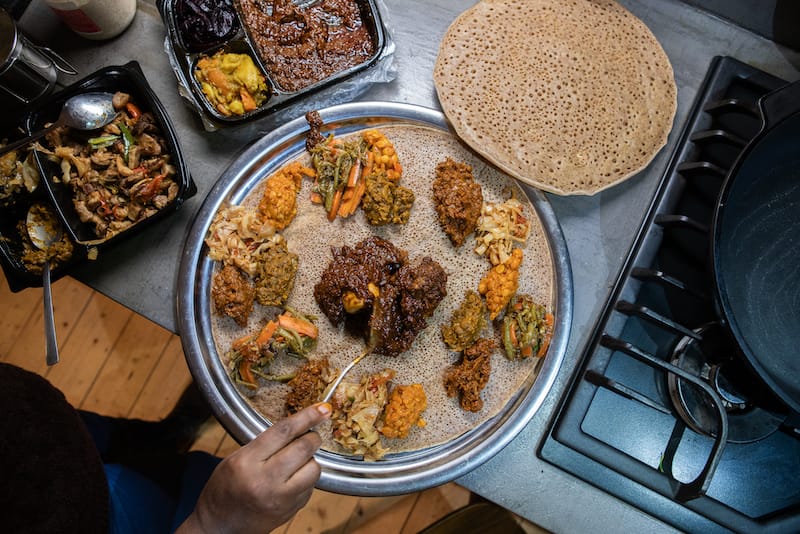
We first tried Mimi’s food at a friend’s summer pool party two summers ago when Mimi was still substituting injera with lavash – a local flatbread made from white flour commonly used to make shaurma rolls – as she was unable to source teff flour for injera.
After chatting about our previous experience with Ethiopian food while traveling in Tanzania, Mimi promised us that she would try and find a way to make injera. Indeed, a few months later we saw her Facebook page update about a “Tbilisian Injera” recipe she finally devised after months of experimentation in her home kitchen.
It took us about a year to get back in touch to try her food again. Delighted to hear from us, Mimi offered to deliver the food herself along with some of her batter so we could see the process and have some fresh warm injera cooked up right at home.
Mimi showed up with Dana and cooked up a few injeras for our meal, lugging along a large griddle for the cause. She tells us that her injera batter is made from a mixture of corn flour, ragi (an Indian millet) that she sources from Indian grocery shops, white flour and yeast.
This is the closest taste she could get to the original batter that requires teff. Once a few injeras were ready, Mimi proceeded to lay out the accompanying dishes she had brought in takeaway containers, to serve us our injera platter just as is done back in her homeland.
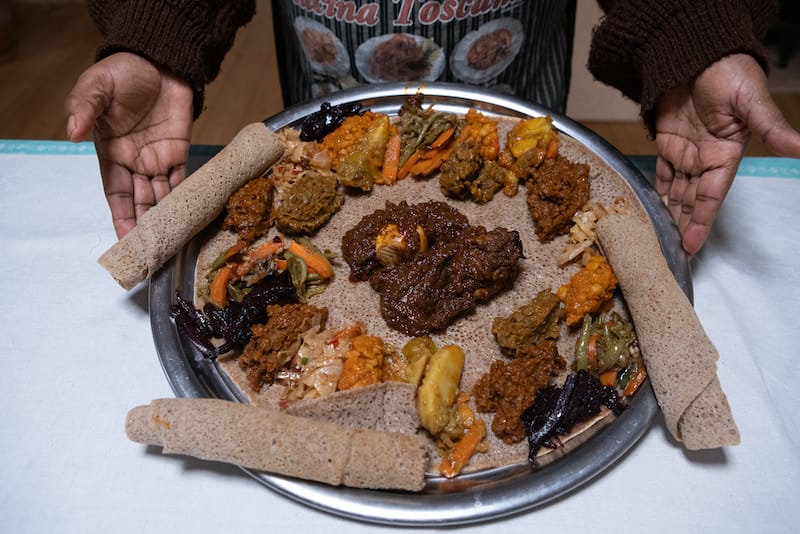
We enthusiastically tucked into the spicy fare in front of us, tearing off pieces of injera to pick up our titbits of choice. The red chili-infused chicken doro wat and spicy lentils were our favorite, though we welcomed the sautéed carrots with green beans and cabbage for a varied and nutritious meal. Our order for two non-vegetarian platters was enough for three of us with leftovers for the next day’s lunch.
Miracle Ethiopian Food has certainly been a welcome addition to Tbilisi’s dining scene, but the future is still uncertain for Mimi and her boys. Their application for refugee status was declined when the Tigray rebels and Ethiopian governments agreed to end hostilities in November 2022. “We were told to go home as there is no more war,” she says.
But Ethiopia remains a fractured state facing famine in many parts of the country despite the fitful peace. Mimi has no desire to return for now. Their asylum-seeker status expires in July 2024 and she’s not sure what will follow. But until then, Tbilisi residents can still order in Mimi’s injera platters.
Mimi’s vegetarian injera meals are served with five different dishes for the vegetarian platter which is priced at 25 gel (about US $9.50) while two meat dishes – tibs and doro wat – are added for non-vegetarians and priced at 50 gel. As she still works as a housekeeper on weekdays, Mimi takes advance orders on her WhatsApp account that’s still linked to her Ethiopian number, and delivers only on Fridays. It must be said that not everyone gets the same special treatment as we did, as her delivery service is a drop-and-go, with her elder sons taking charge of the logistics.
While she tries to accommodate single orders, Mimi admits that it’s hard to meet costs without a minimum of five orders and that her food tastes best when cooked in large batches, an incentive to try her catering services for parties.
Pearly JacobPearly Jacob
Published on April 04, 2024
Related stories
March 5, 2019
AthensYou might not have heard of trahana, sometimes called rustic pasta, if you don’t possess a Greek grandmother. This humble food rarely turns up in tavernas, yet it is a staple, especially in the winter months, and the basis of many a comforting meal. In fact, it may just be the world’s first instant soup.…
September 12, 2013
IstanbulIt is puzzling that Istanbul, a city of some 15 million people with an increasingly lavish lifestyle, a world-famous cuisine and a booming tourism industry, has so little sparkle when it comes to fine dining. We’re surprised that the Prime Minister himself has not jumped into the culinary scrum by demanding no fewer than three…
March 9, 2017
QueensQuick bite: On this full-day Queens food tour, we’ll visit Corona and Elmhurst, two of the boroughs more diverse neighborhoods where we will sample more than a dozen specialties of Latin America, Southeast Asia, South America and more. The largest of New York’s five boroughs, Queens is the home of over two million people, half…







































